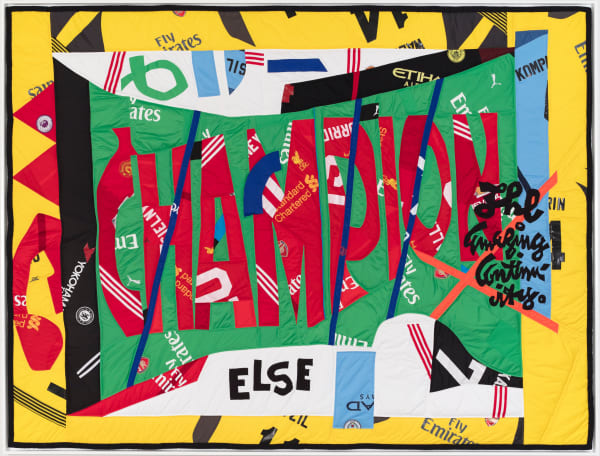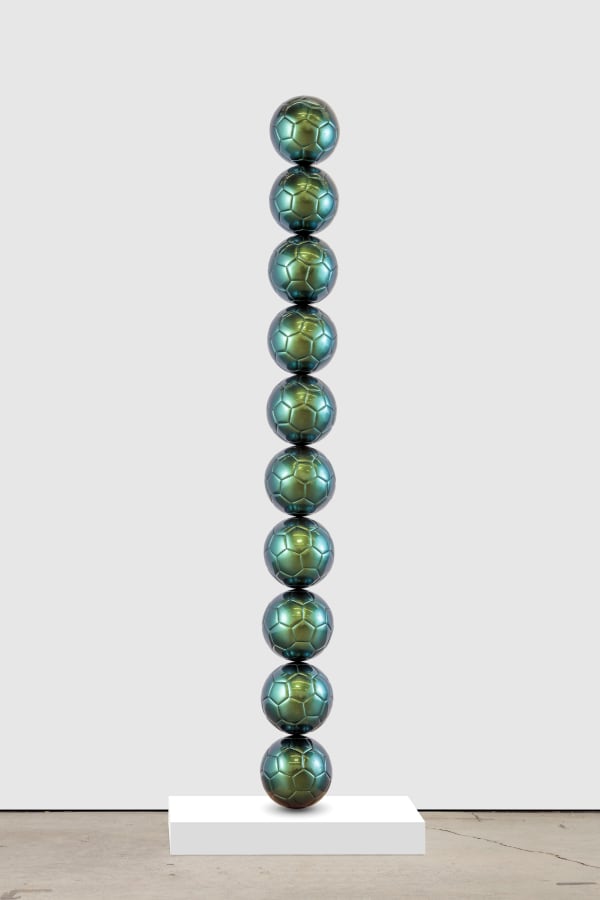HANK WILLIS THOMAS
The Beautiful Game
The Beautiful Game will explore the intersection of art, sports and geopolitics. These arenas are often thought of as discrete and unrelated, but in fact they have significant overlap and resonance, particularly in relation to modernism, nationalism, colonialism, and human nature across time and culture. Containing sculptures referencing both Brancusi and football, and quilts made from football jerseys that reproduce iconic works of art by Matisse and Picasso as well as Ghanaian Asafo flags, The Beautiful Game alludes to skirmishes on the rugby field or football pitch as well as the battlefields of art, culture, and history.
Sport is often said to be a proxy for warfare, an "appropriate" channel for our inclinations towards division based on arbitrary signifiers such as tribe, nationality, skin colour, class, etc. This demarcation of "us" versus "them" appears throughout history and cultures; there is nothing that humans will not use as a basis for division and presumed superiority. In connecting sport - and specifically football, the most popular and among the most lucrative sports in the world, and one which relies heavily on the labour and skill of international players, frequently of the African diaspora - to this impulse, this exhibition asks us to see uncomfortable connections between our pasts and our presents.
The function and aesthetic of Asafo flags, which have been made from the colonial period to today by the Fante people of Ghana, developed in relation to African contact with Europe starting in the 18th century. Visual representations of military "companies," their primary function is to connote intra-company belonging and exert power and dominance over competing companies - us versus them, again. European modernism, with Brancusi, Matisse, and Picasso its herald bearers, developed in relation to European contact with Africa in the same period, whether through art and material culture, photographic images of African people and places, or interactions with individual Africans in Europe. Though poorly acknowledged, this debt cannot be ignored.











